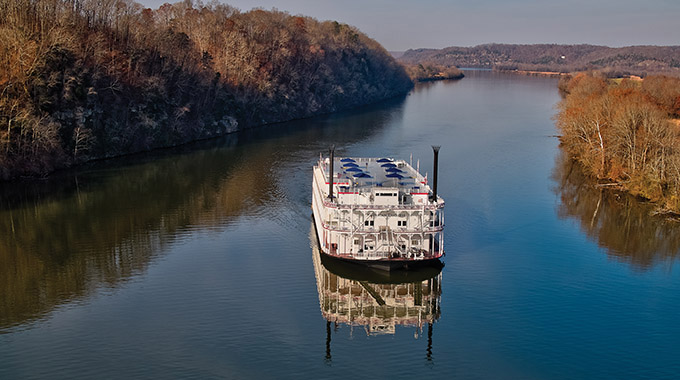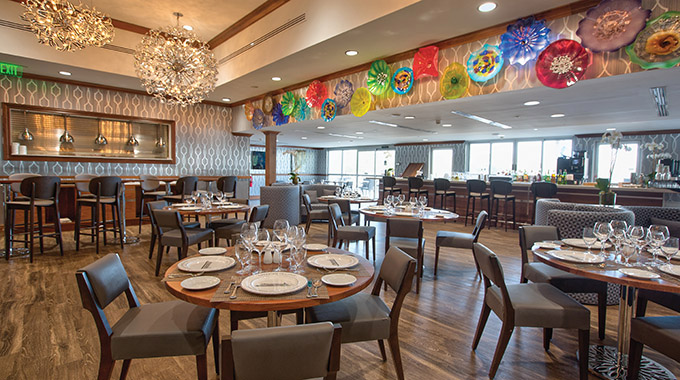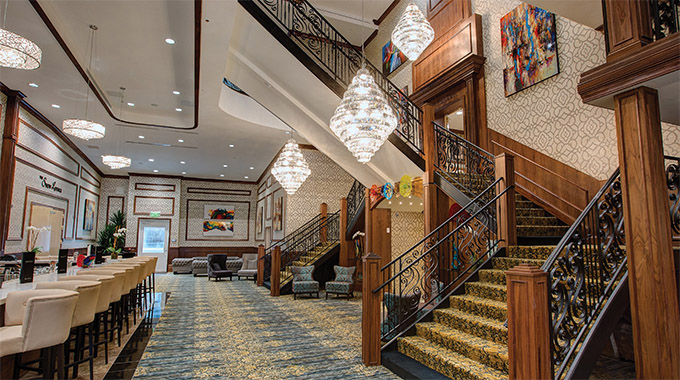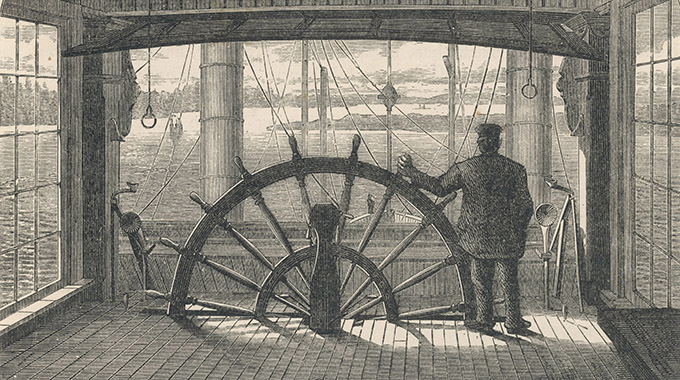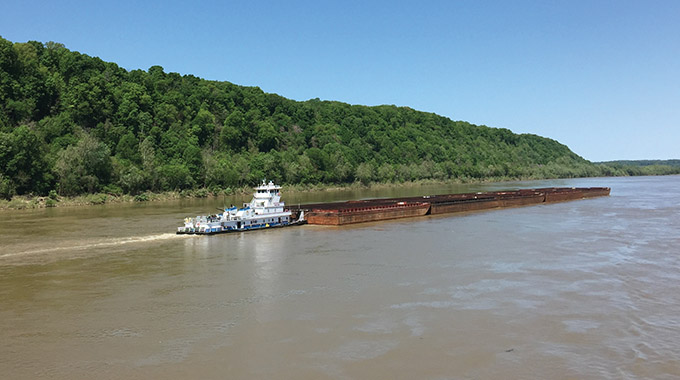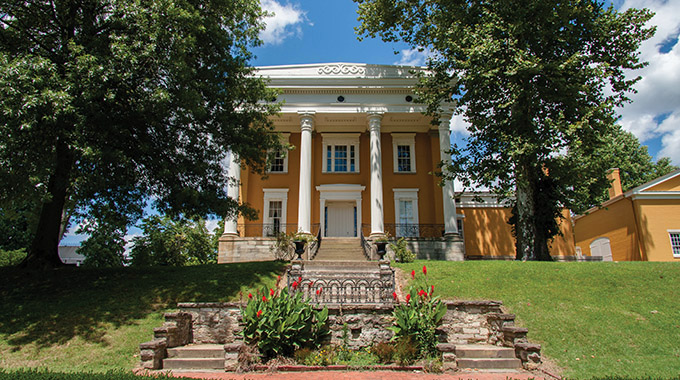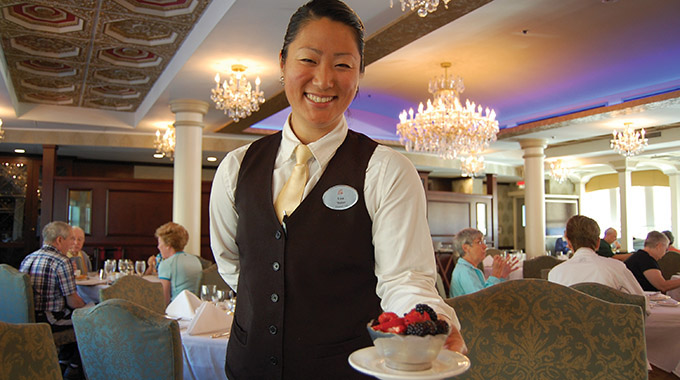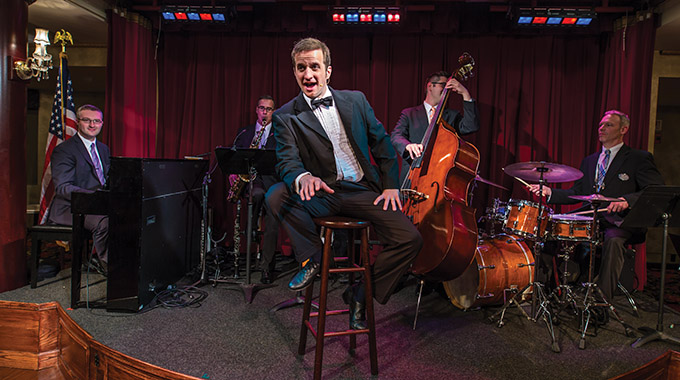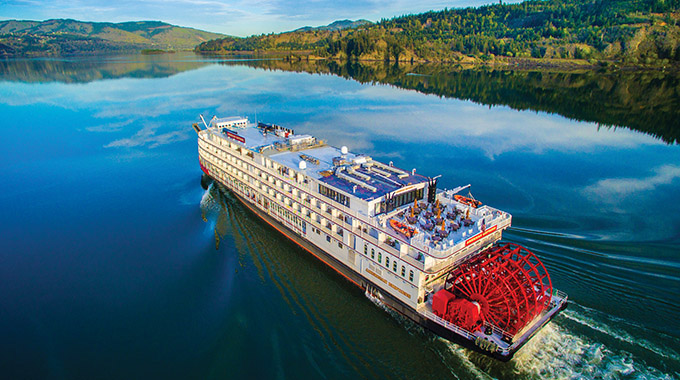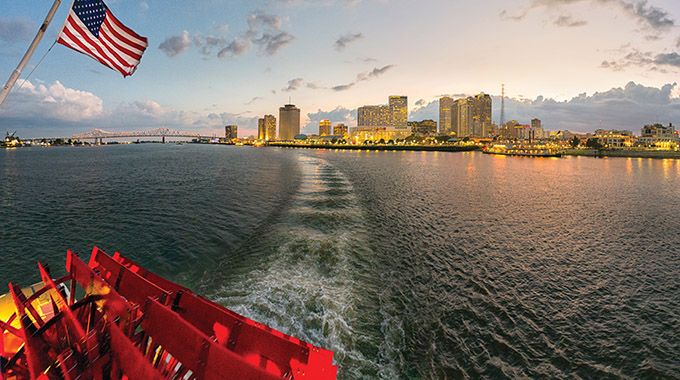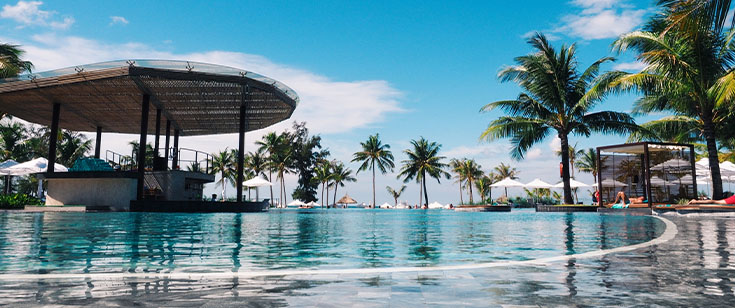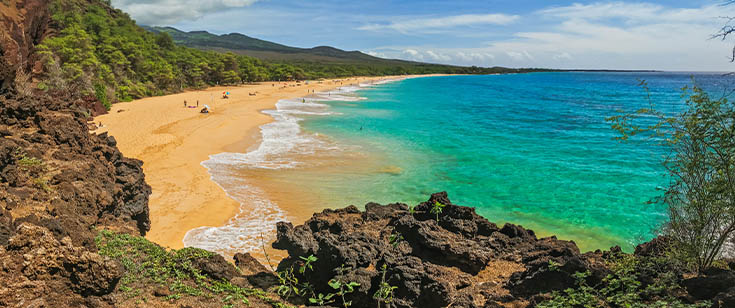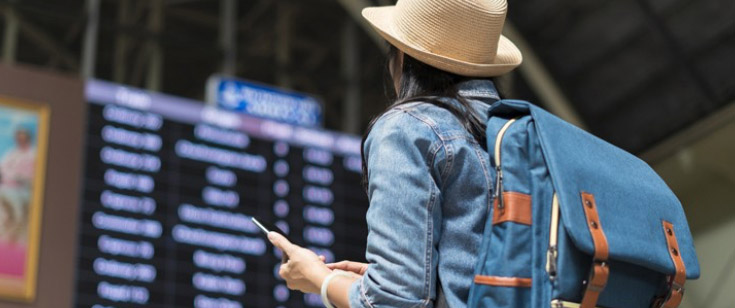As our boat entered the Cannelton Lock and Dam on the Ohio River near Cannelton, Indiana, people stopped their cars along the riverside road and got out to take pictures. Four decks high and painted white with two black smokestacks, a red paddle wheel, and trim resembling a wedding cake, the American Queen Steamboat Company’s (AQSC) American Duchess is surely among the most glamorous boats to use this lock; its normal traffic mostly consists of commercial craft moving cargo.
As the boat emerged from the chamber, having risen to meet the water level on the dam’s upstream side, we saw a row of cars along the side of the lock. Families with young kids waved to us, and we waved back. One couple sat on the back of a bright-red pickup.
“We want to come, too!” the laughing, blond-haired woman called.
“Wish you could come aboard,” we shouted back, waving until the boat carried us out of sight.


